

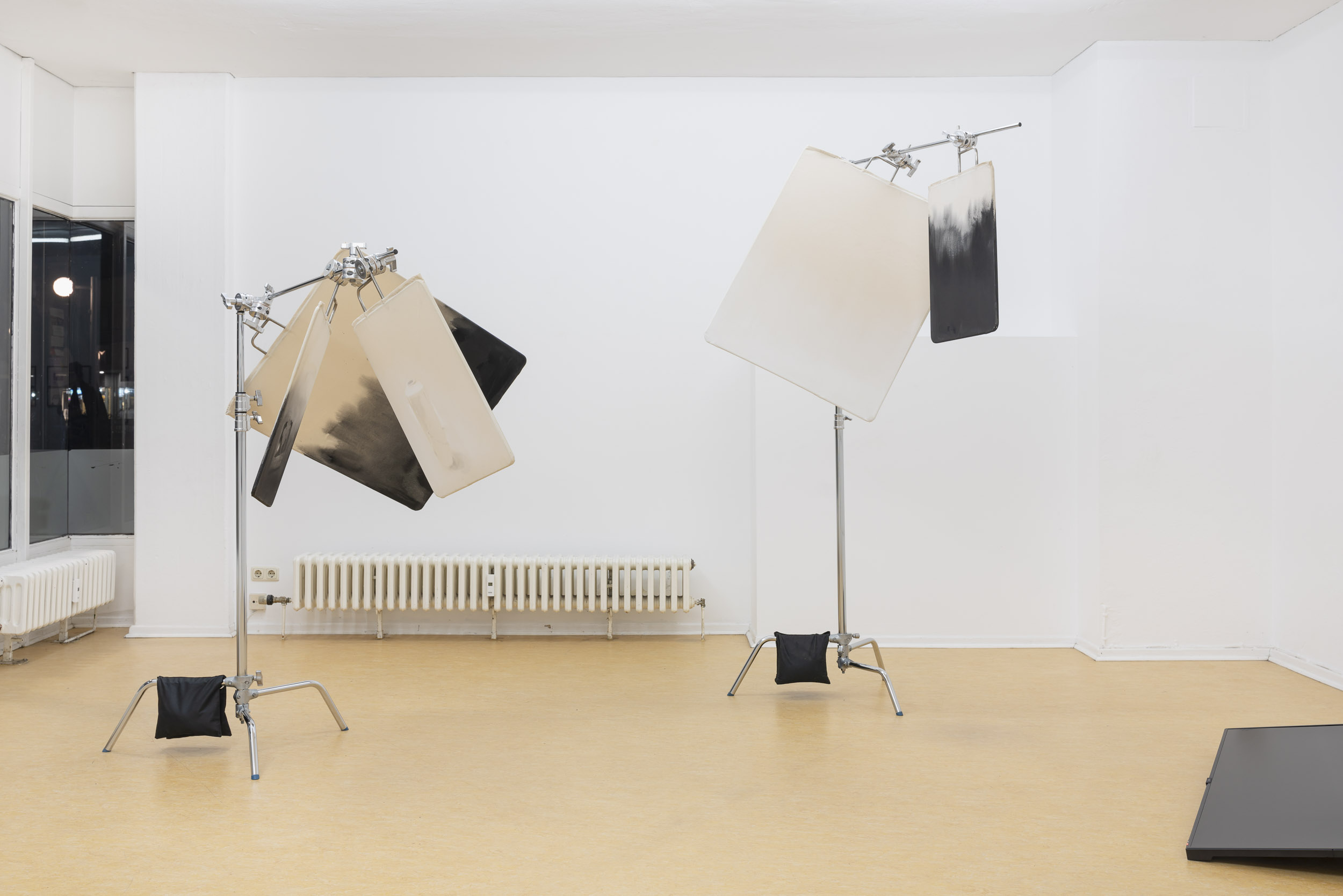
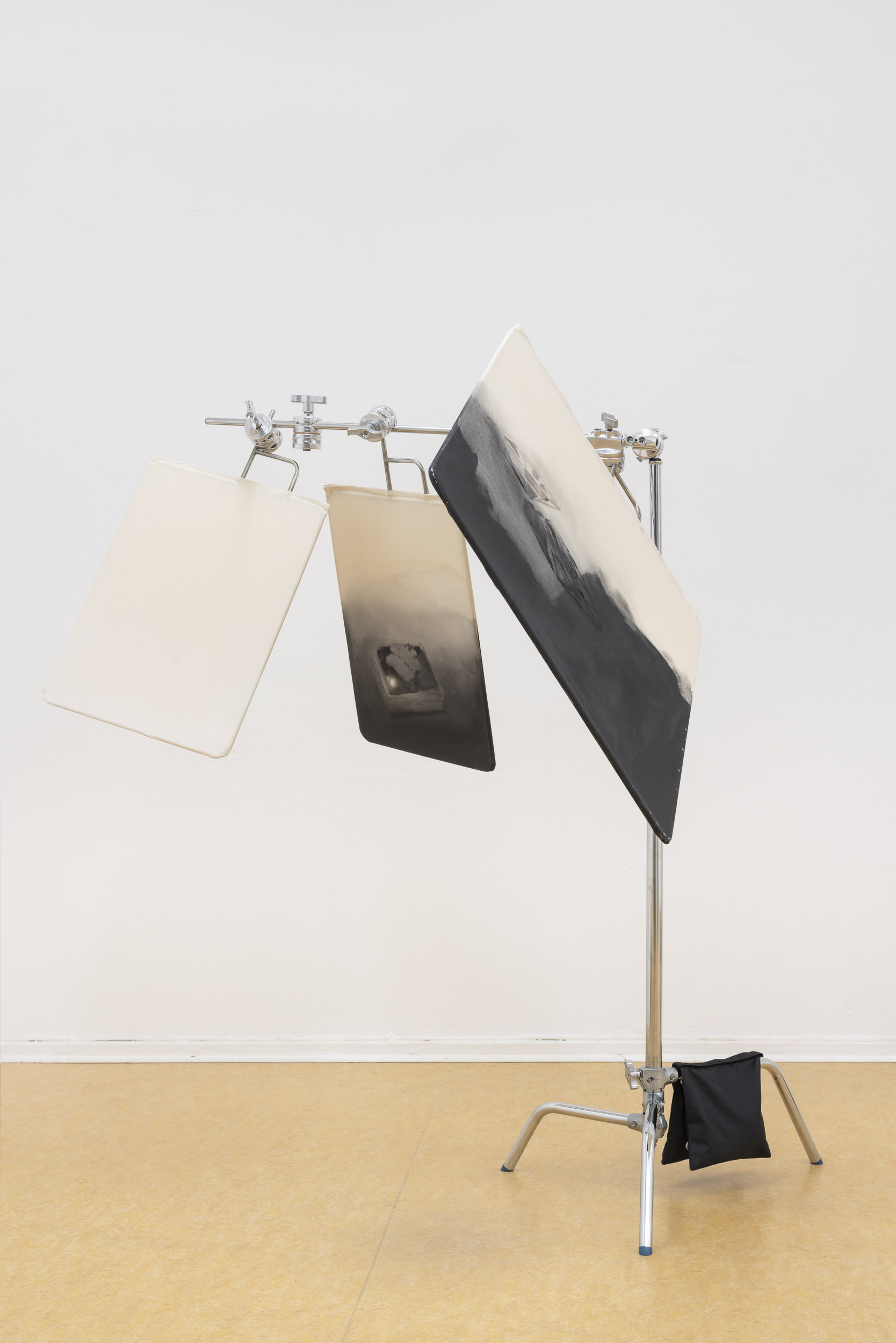
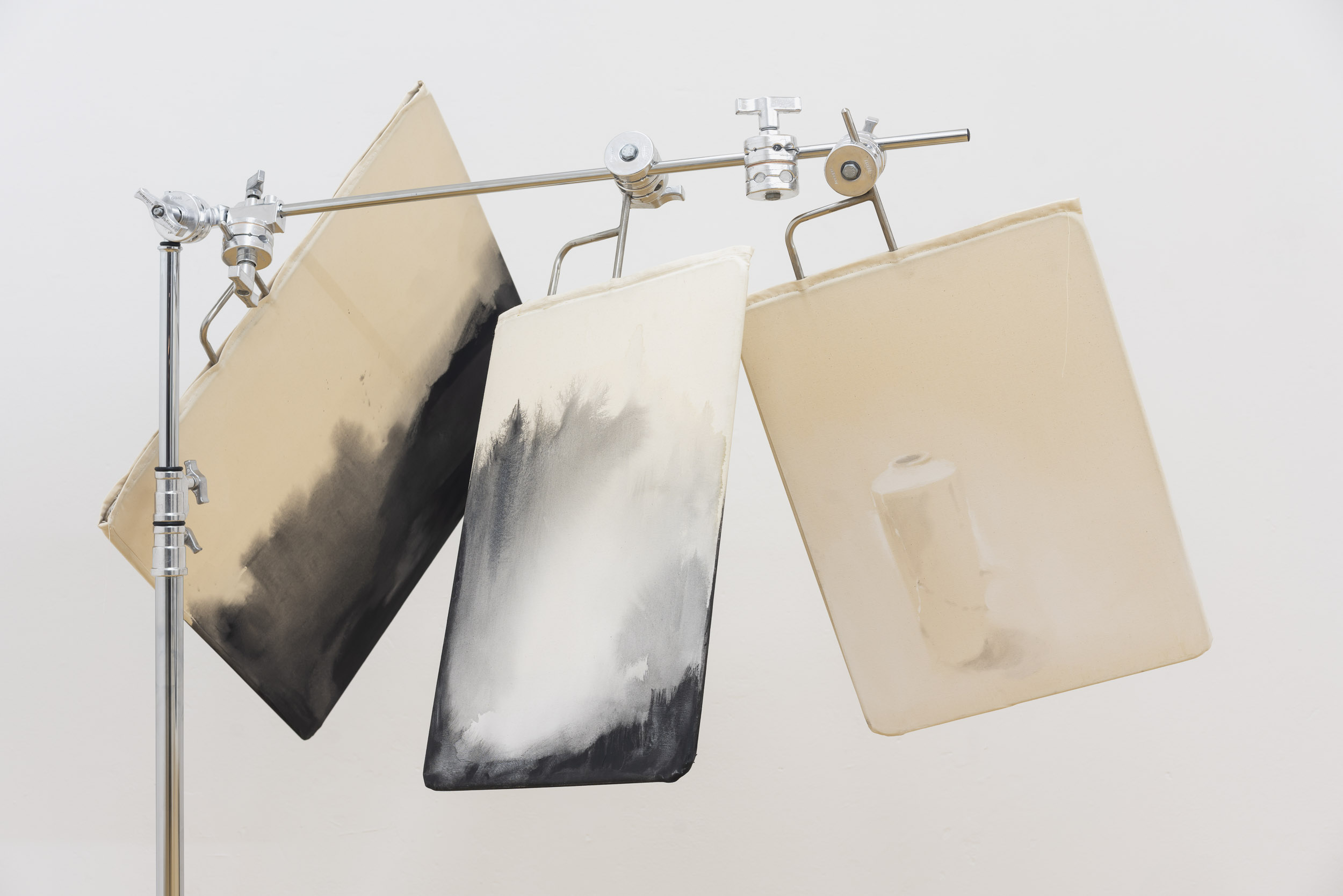
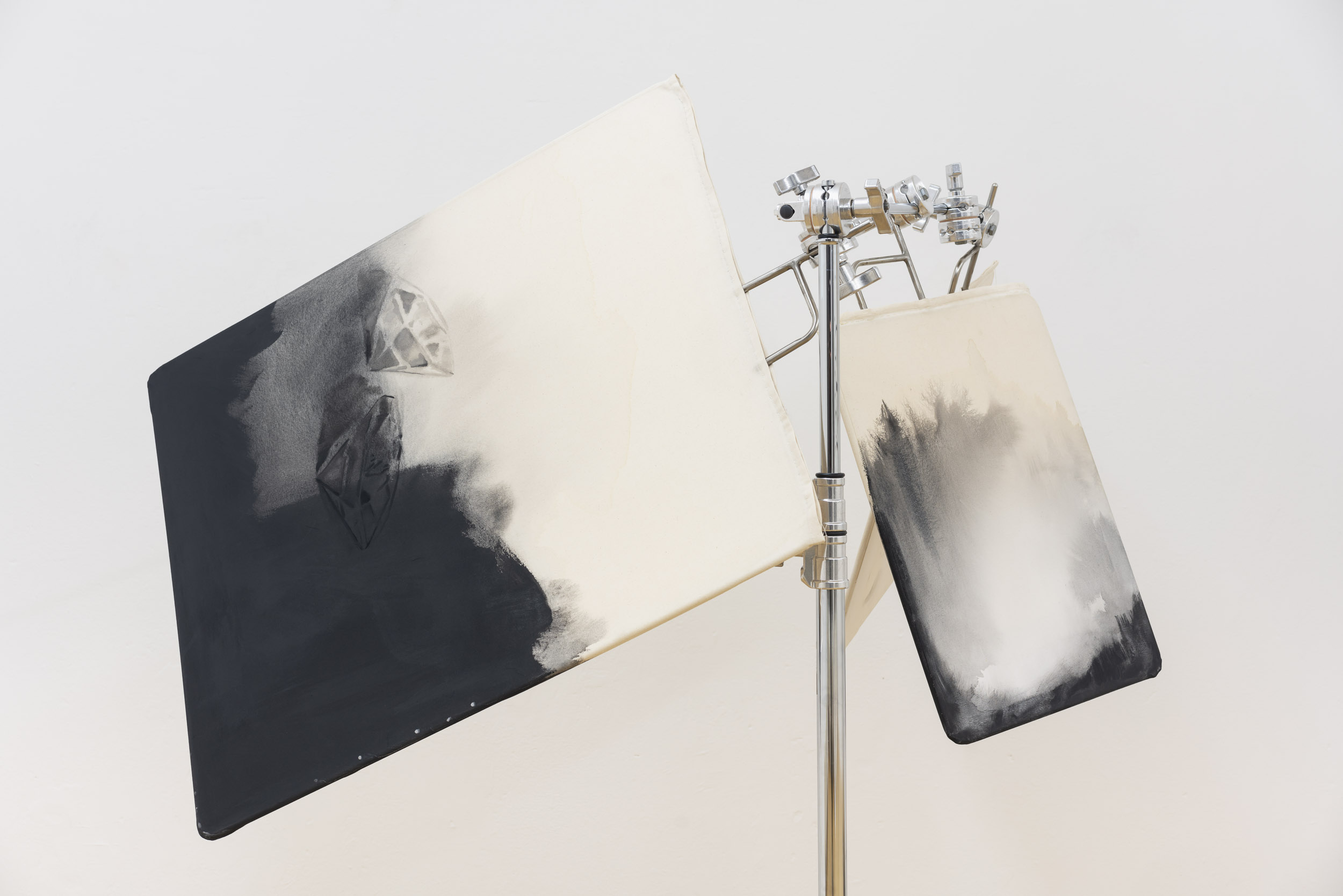
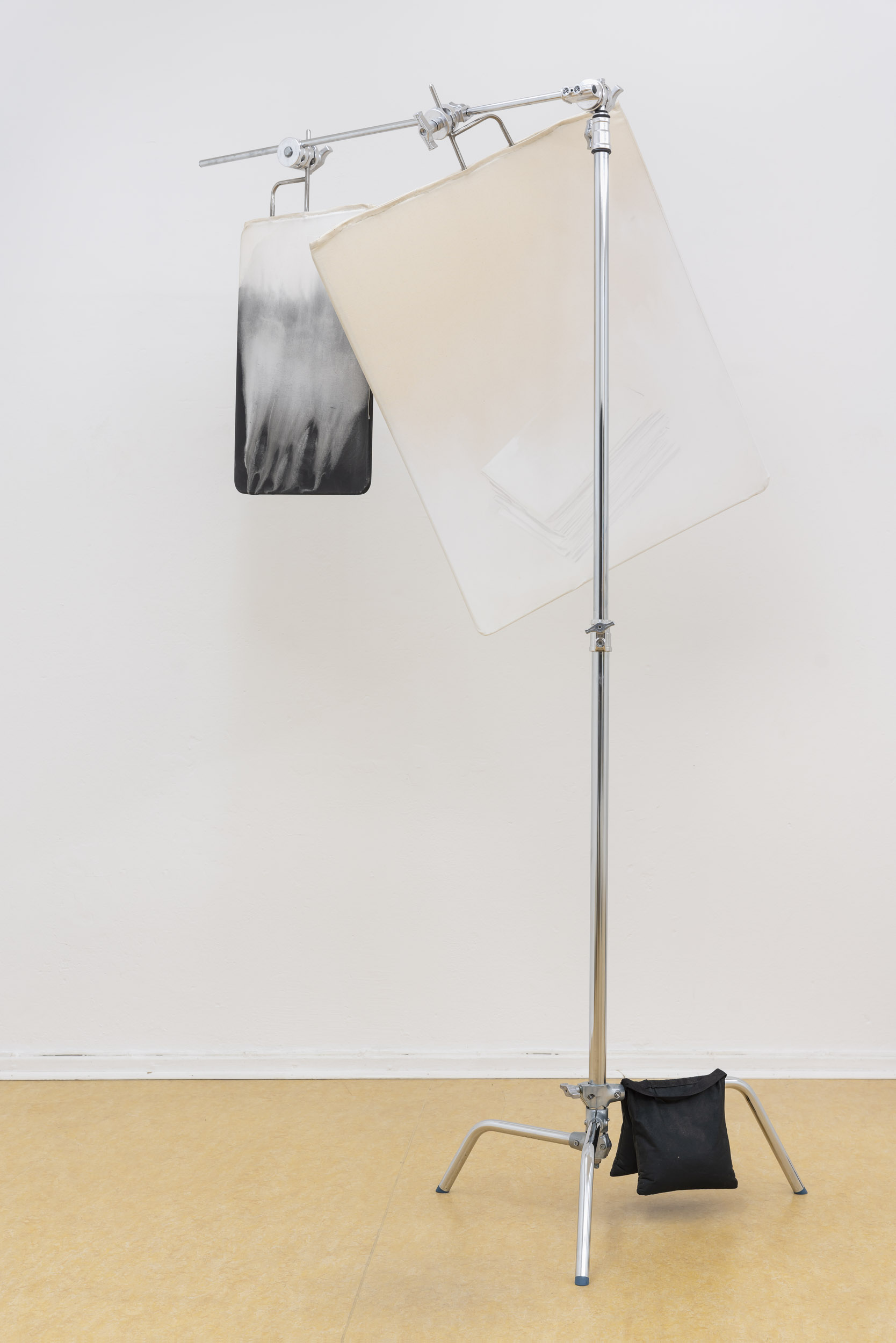
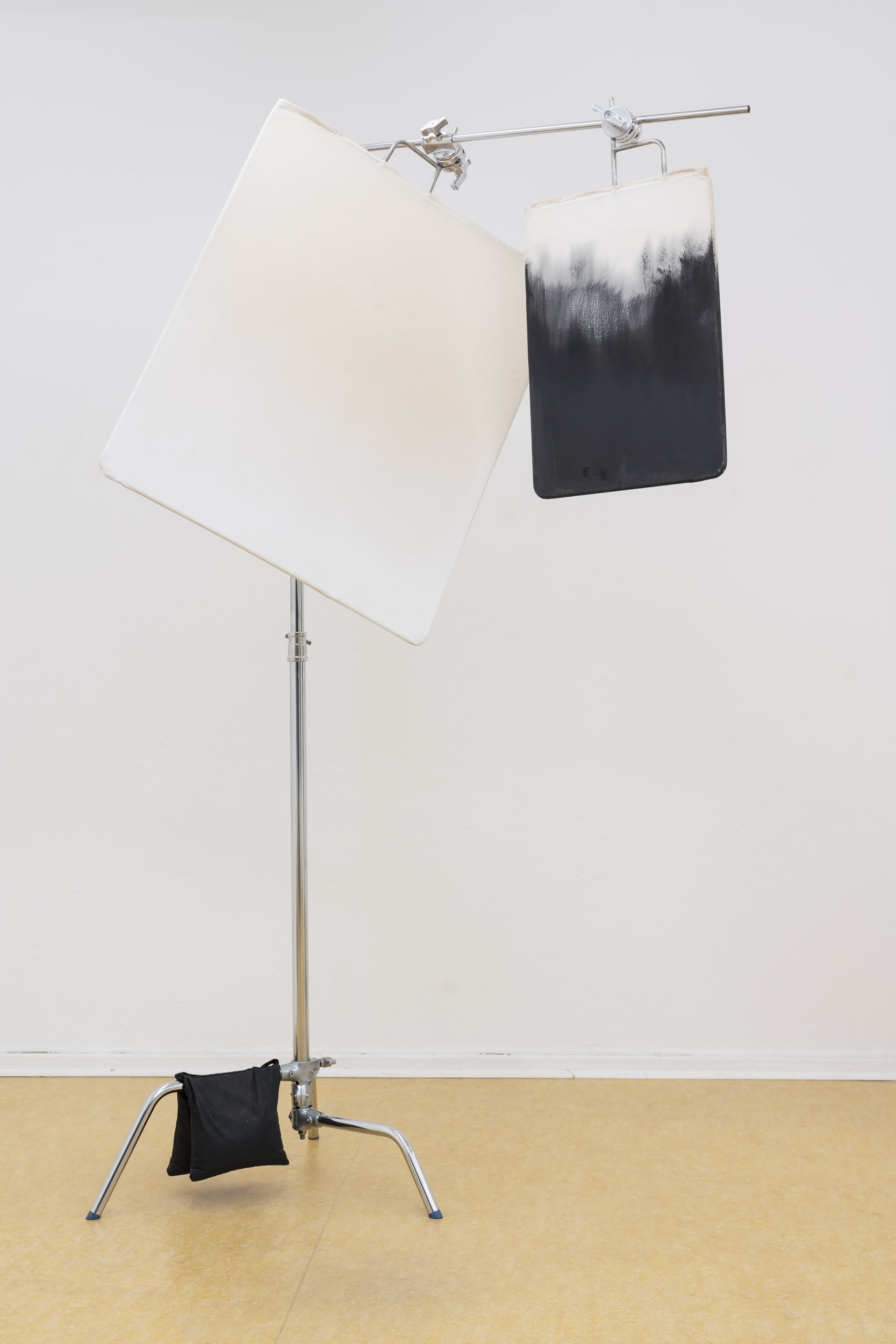
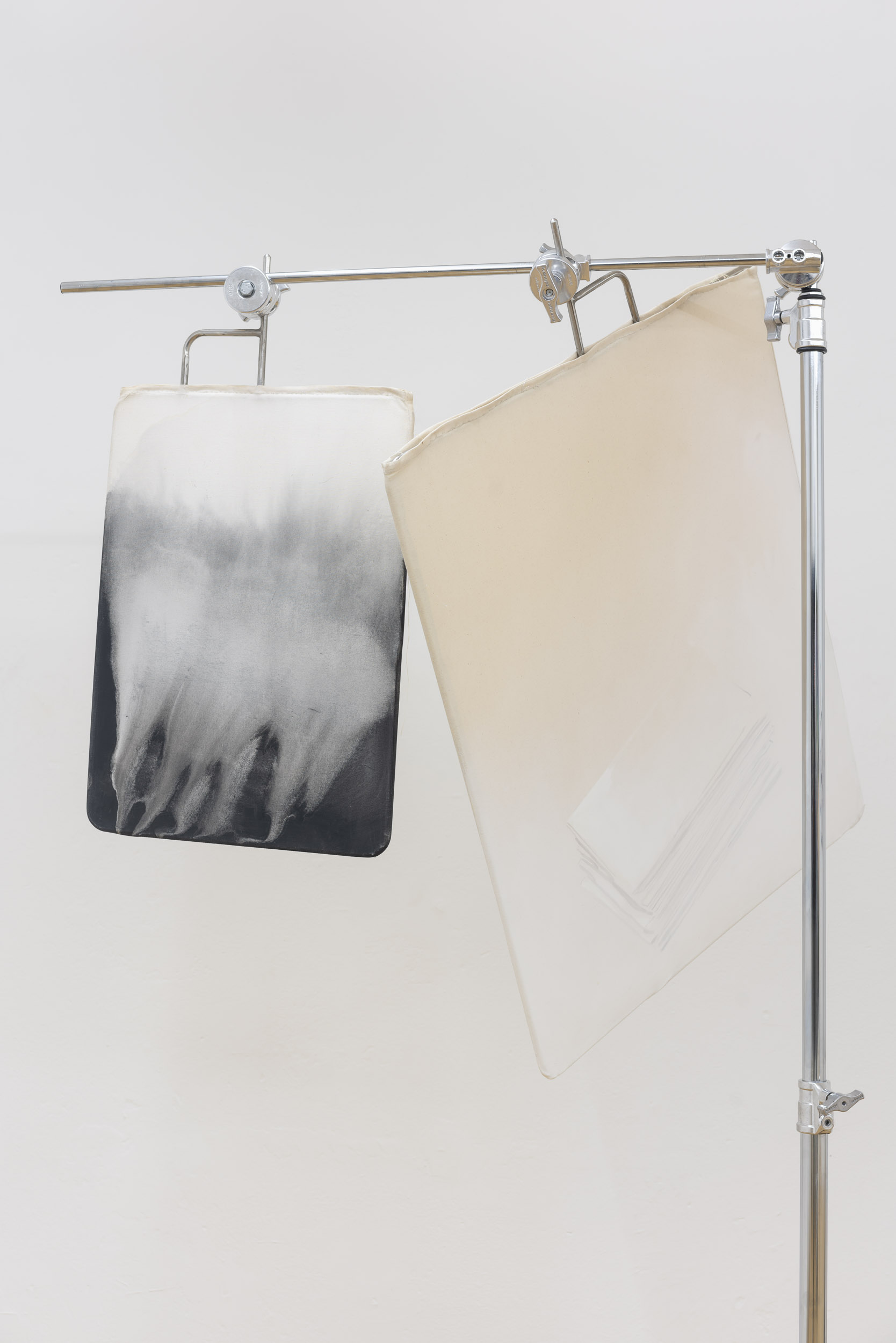
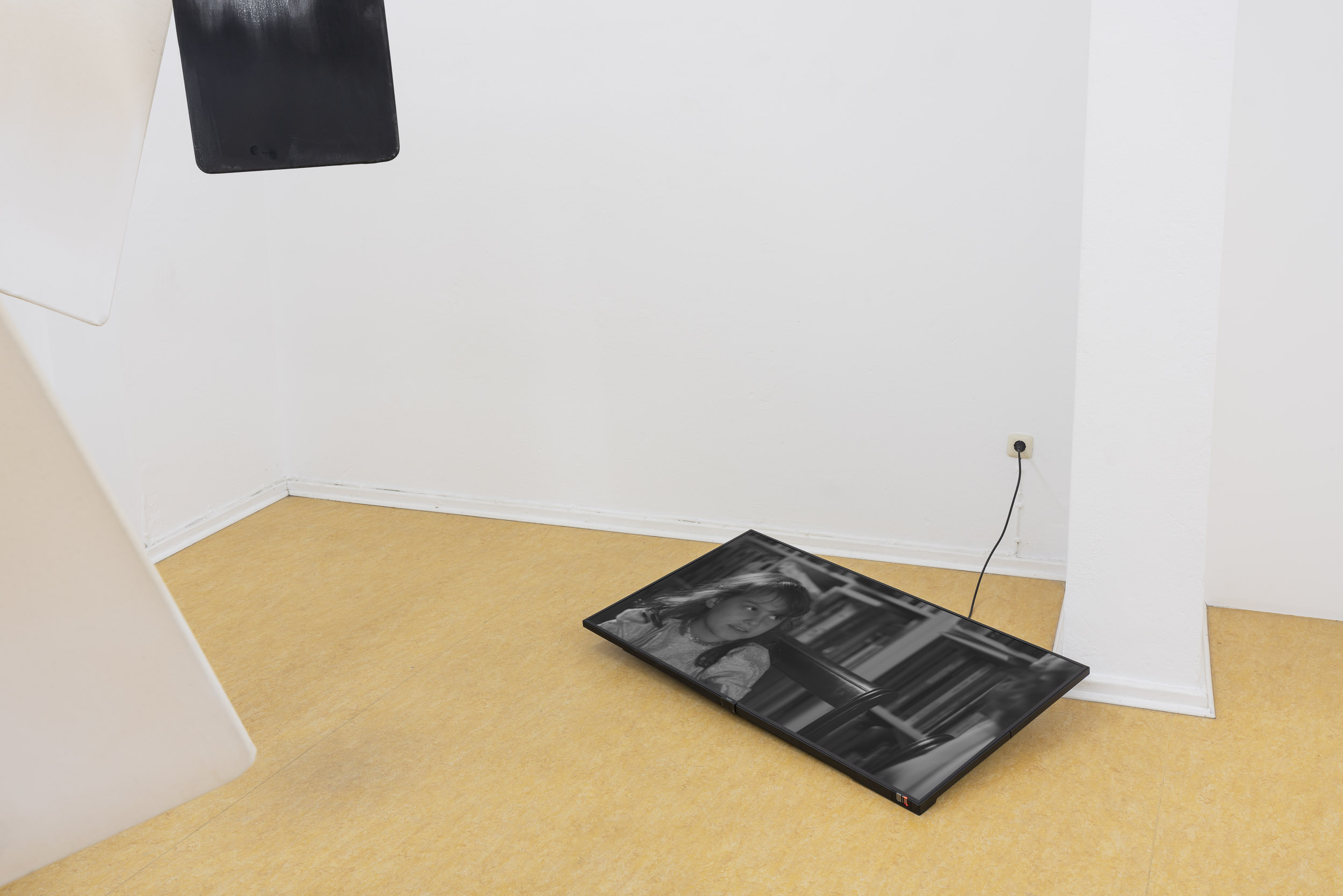
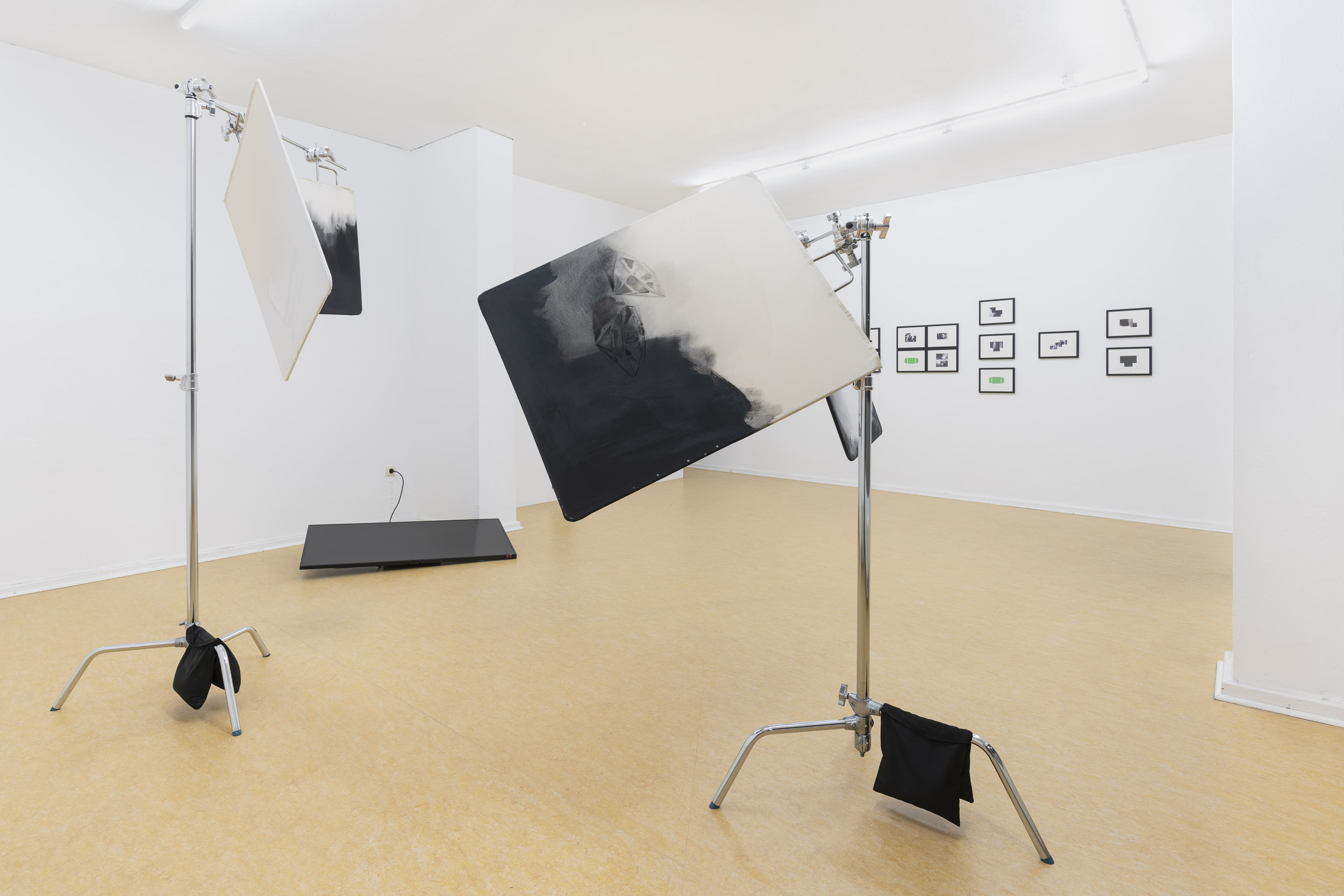
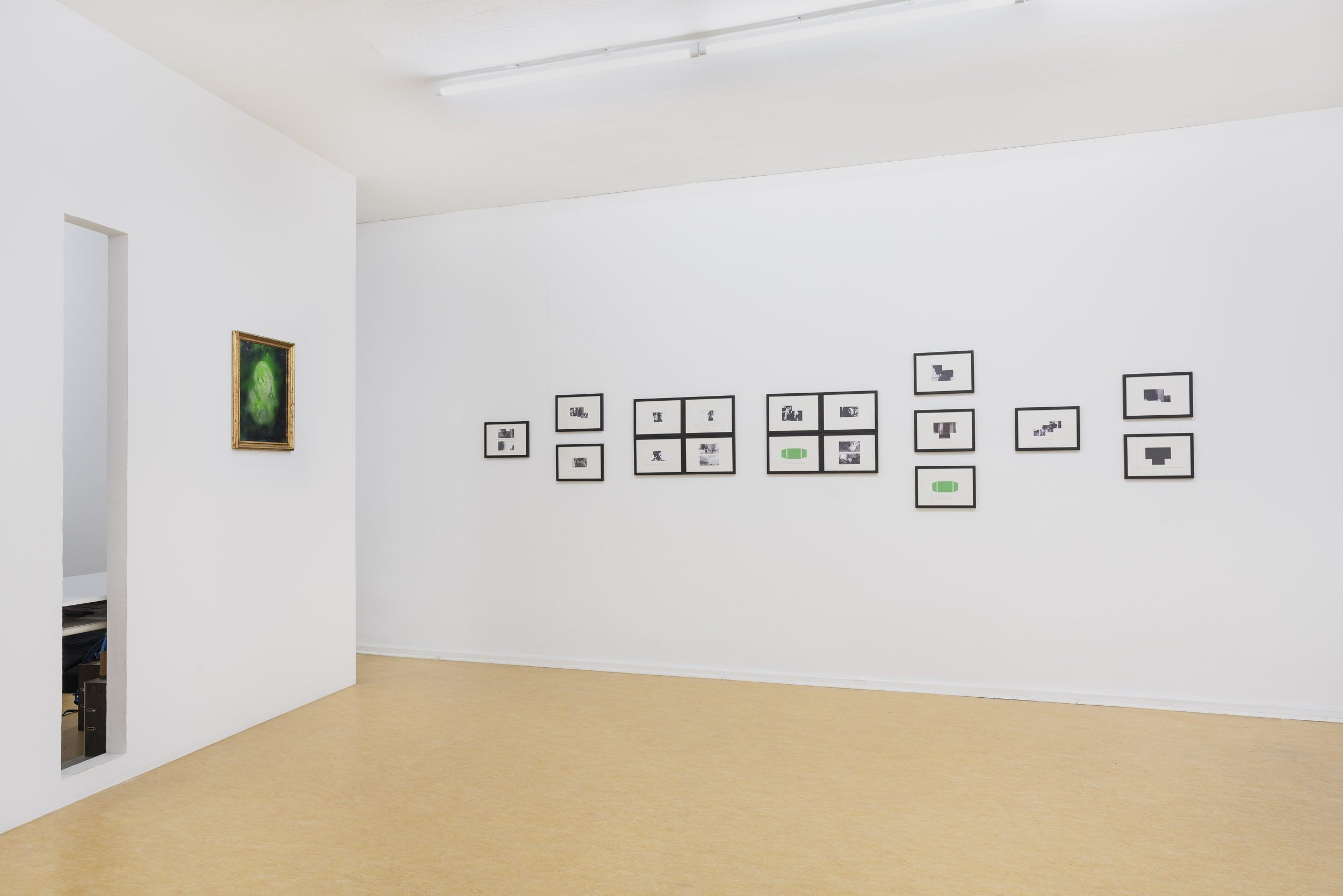
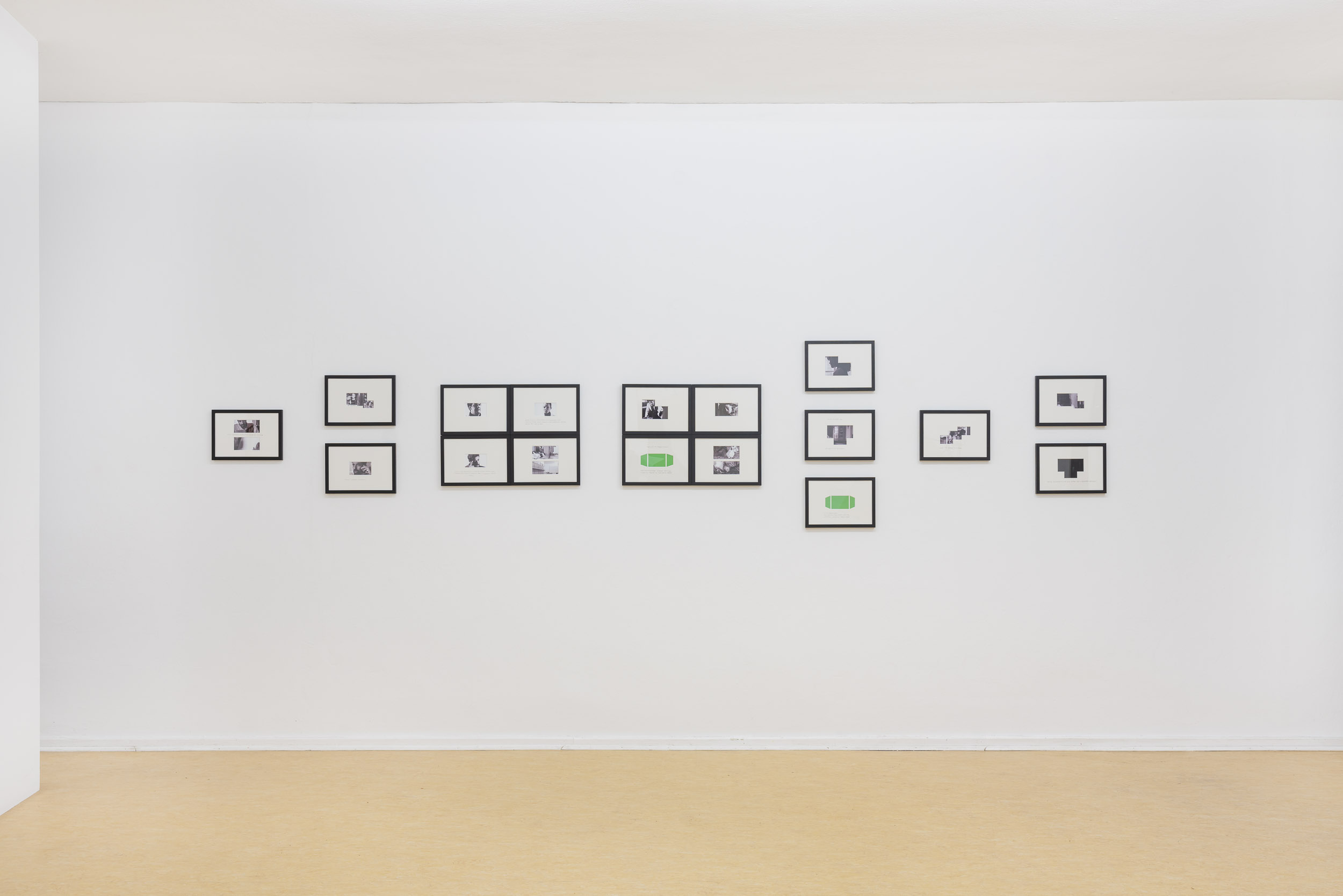
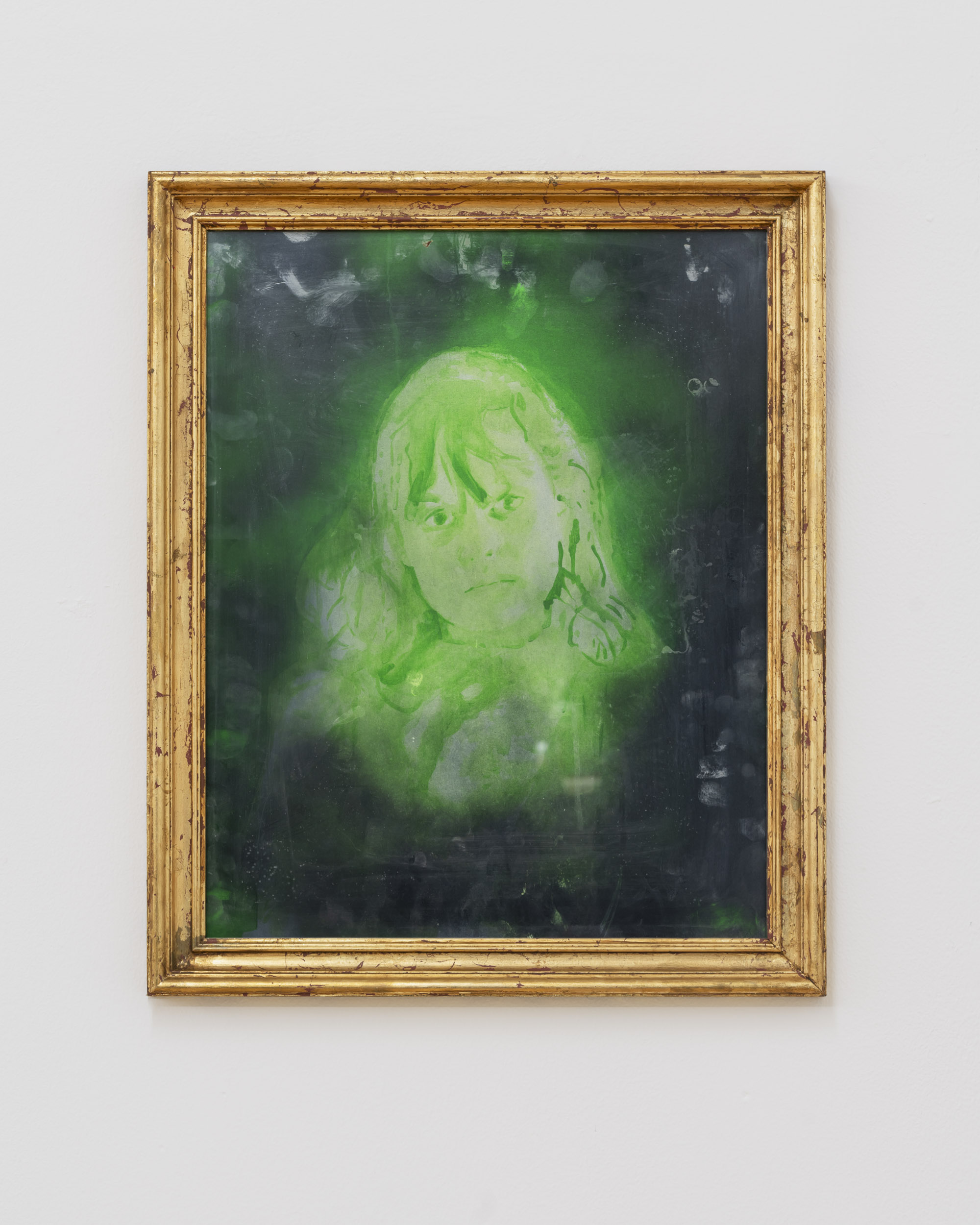
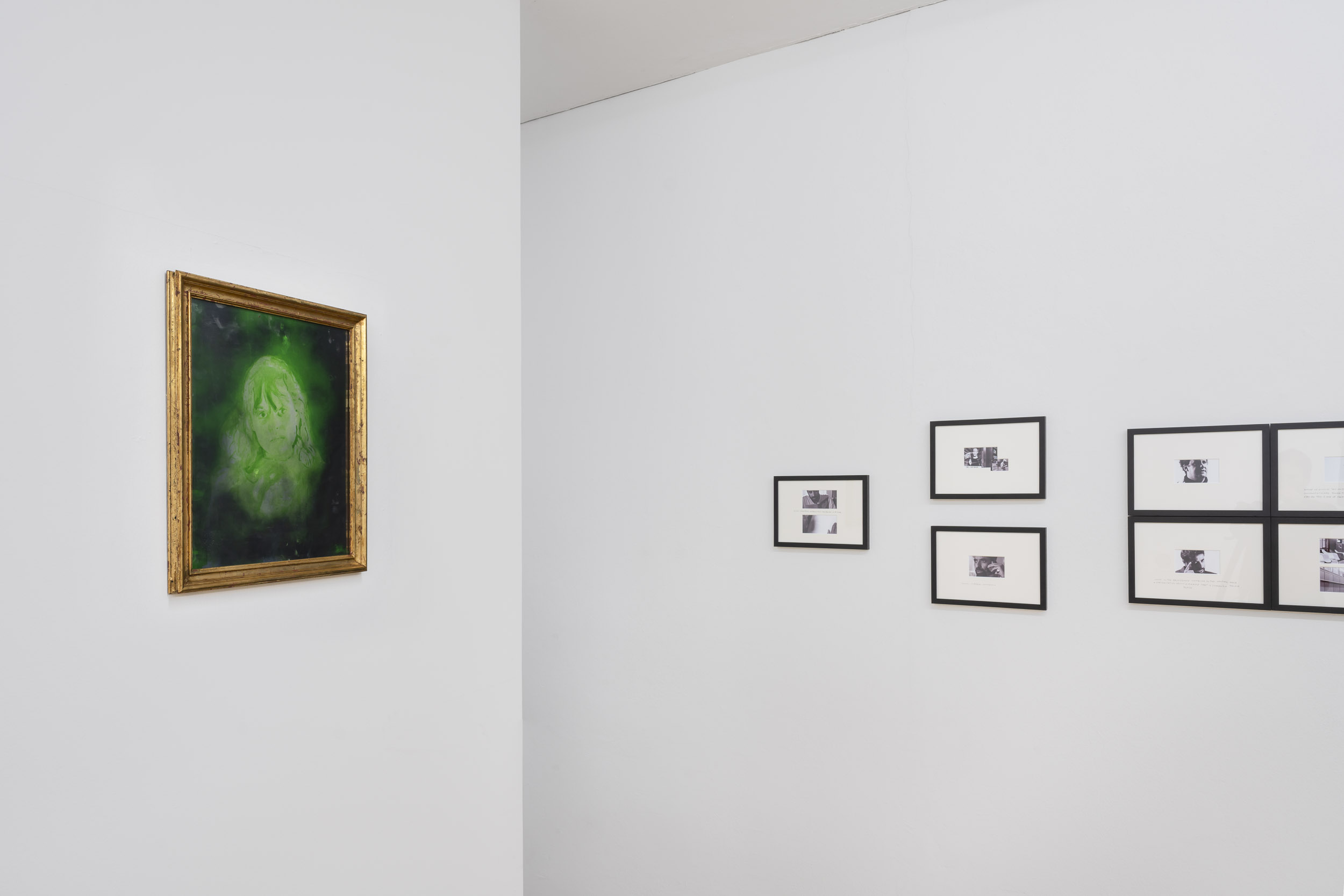
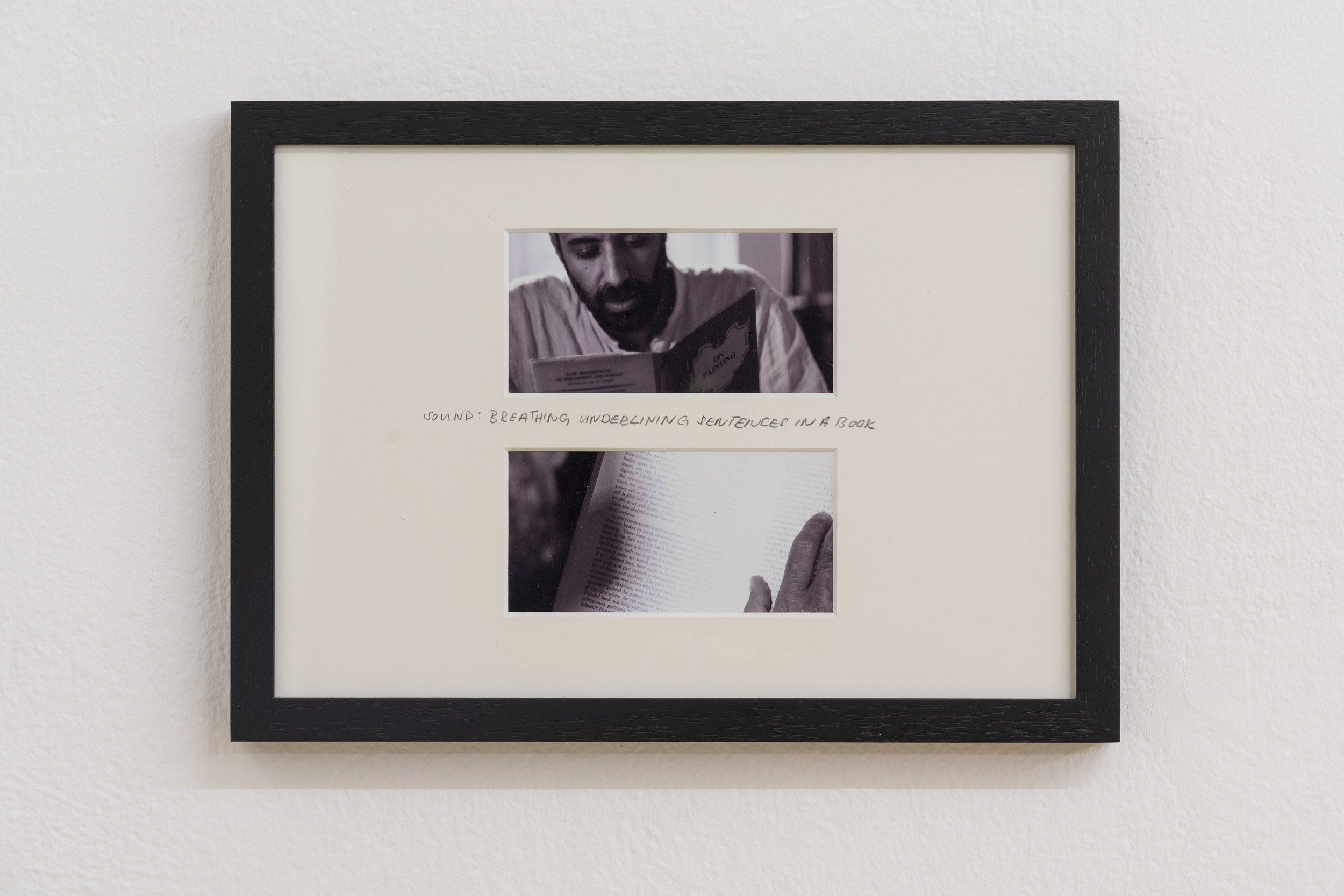
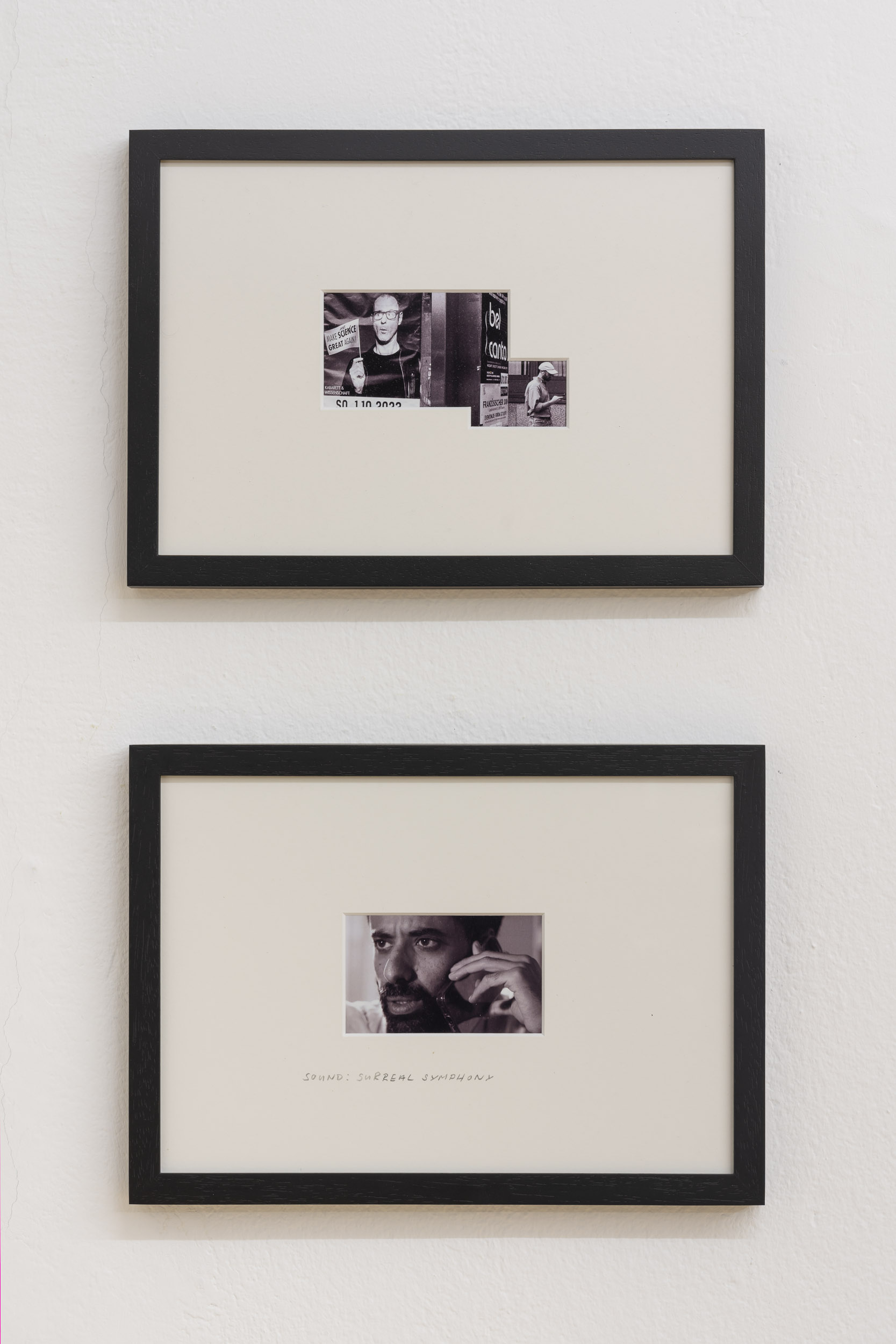
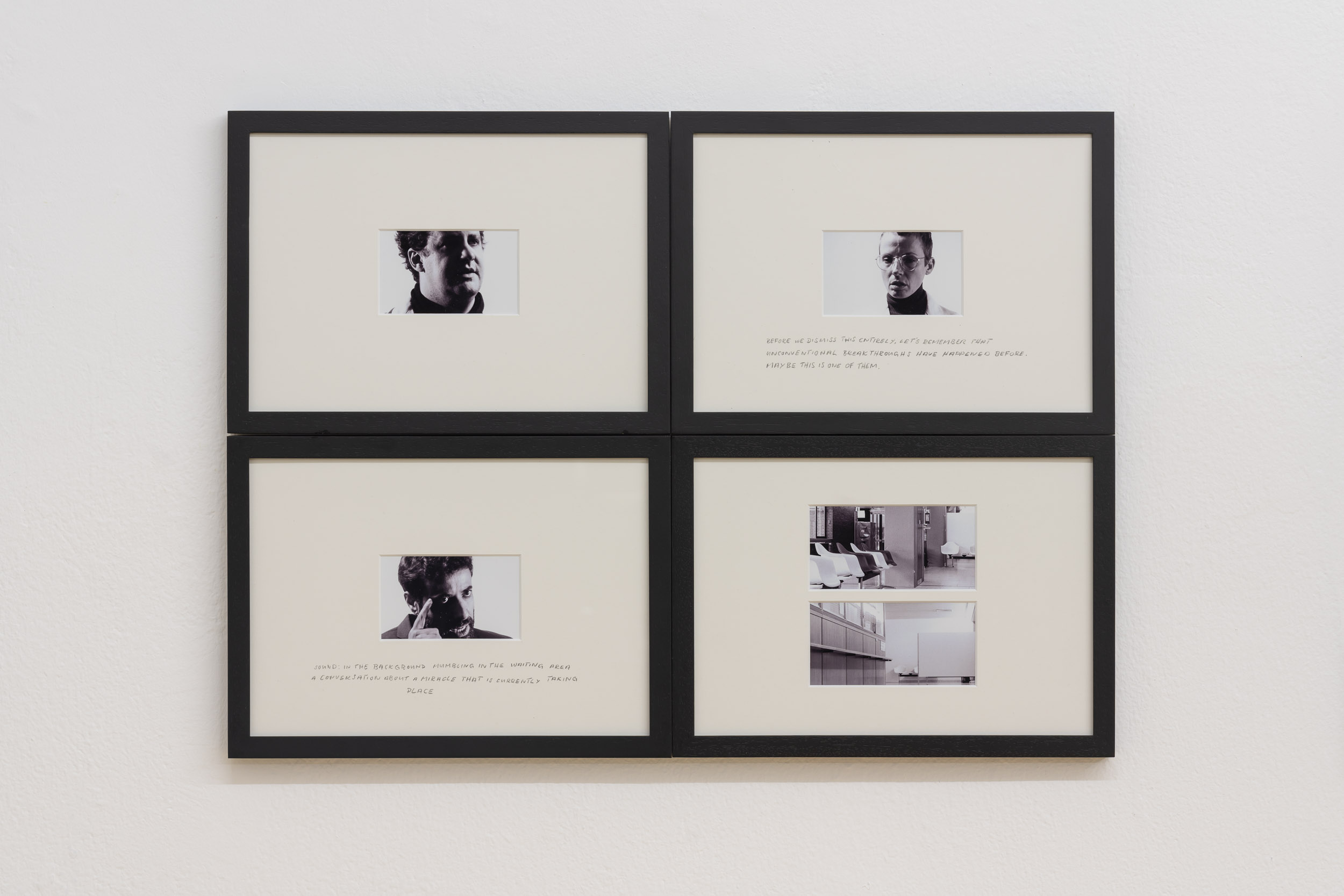
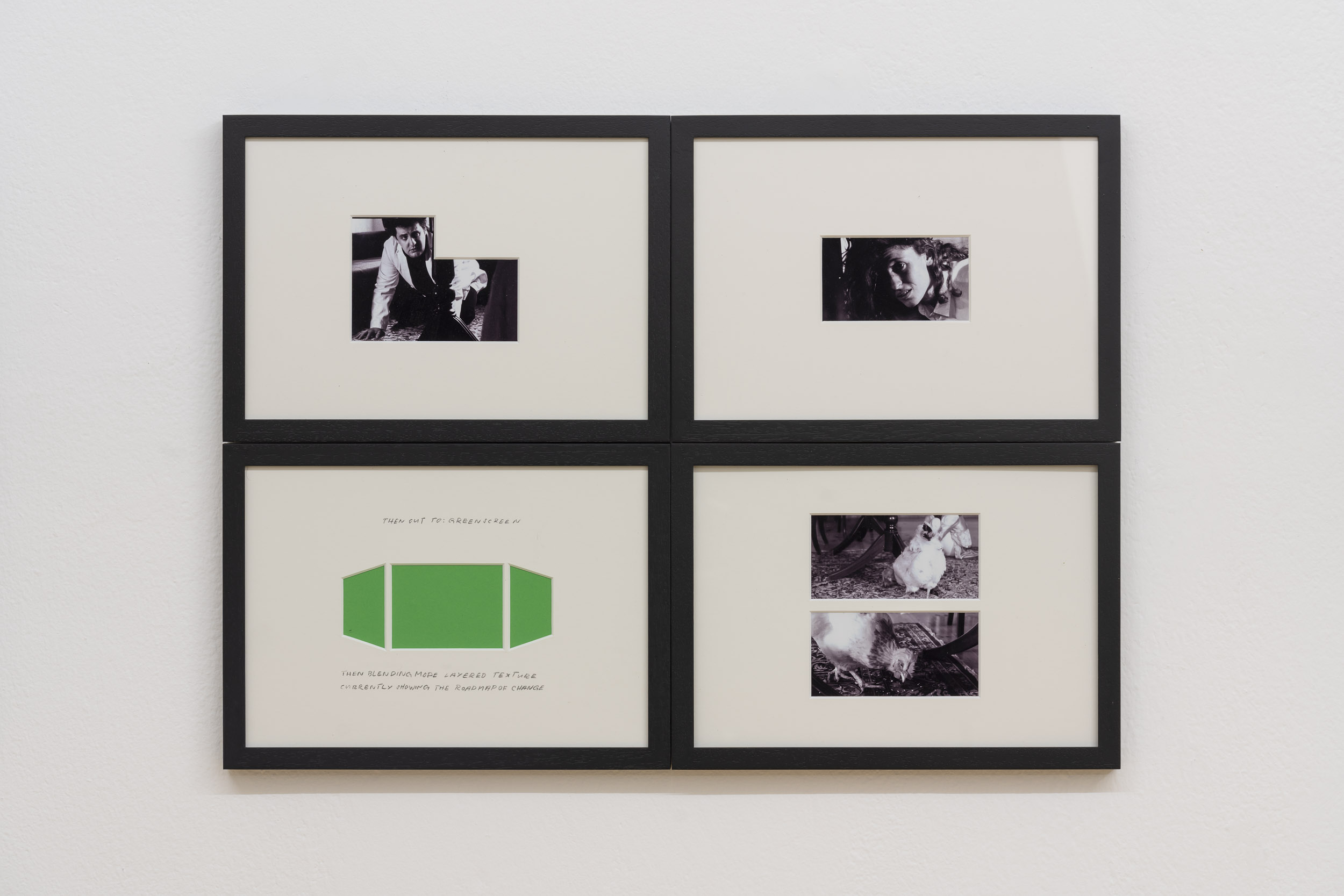
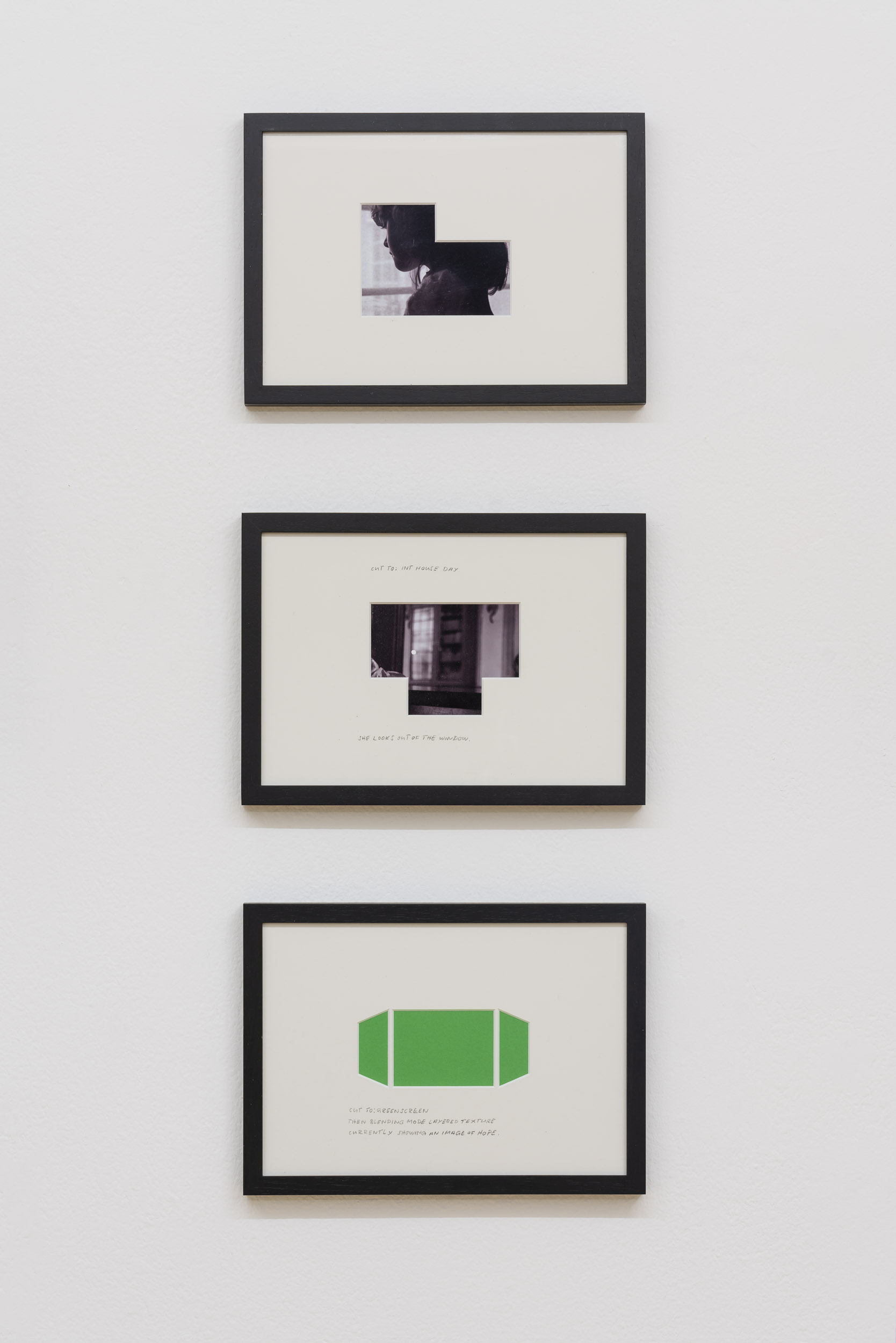
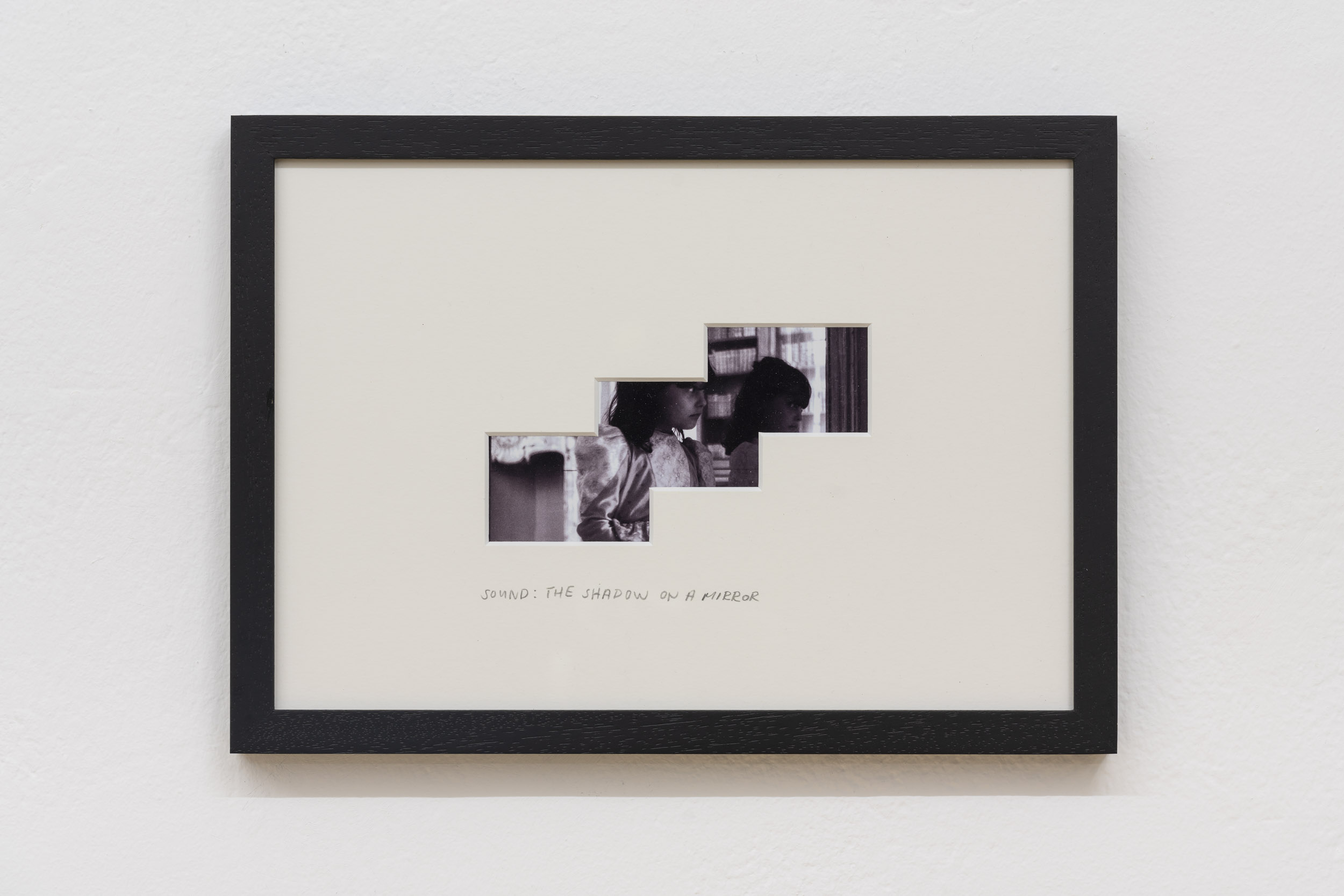
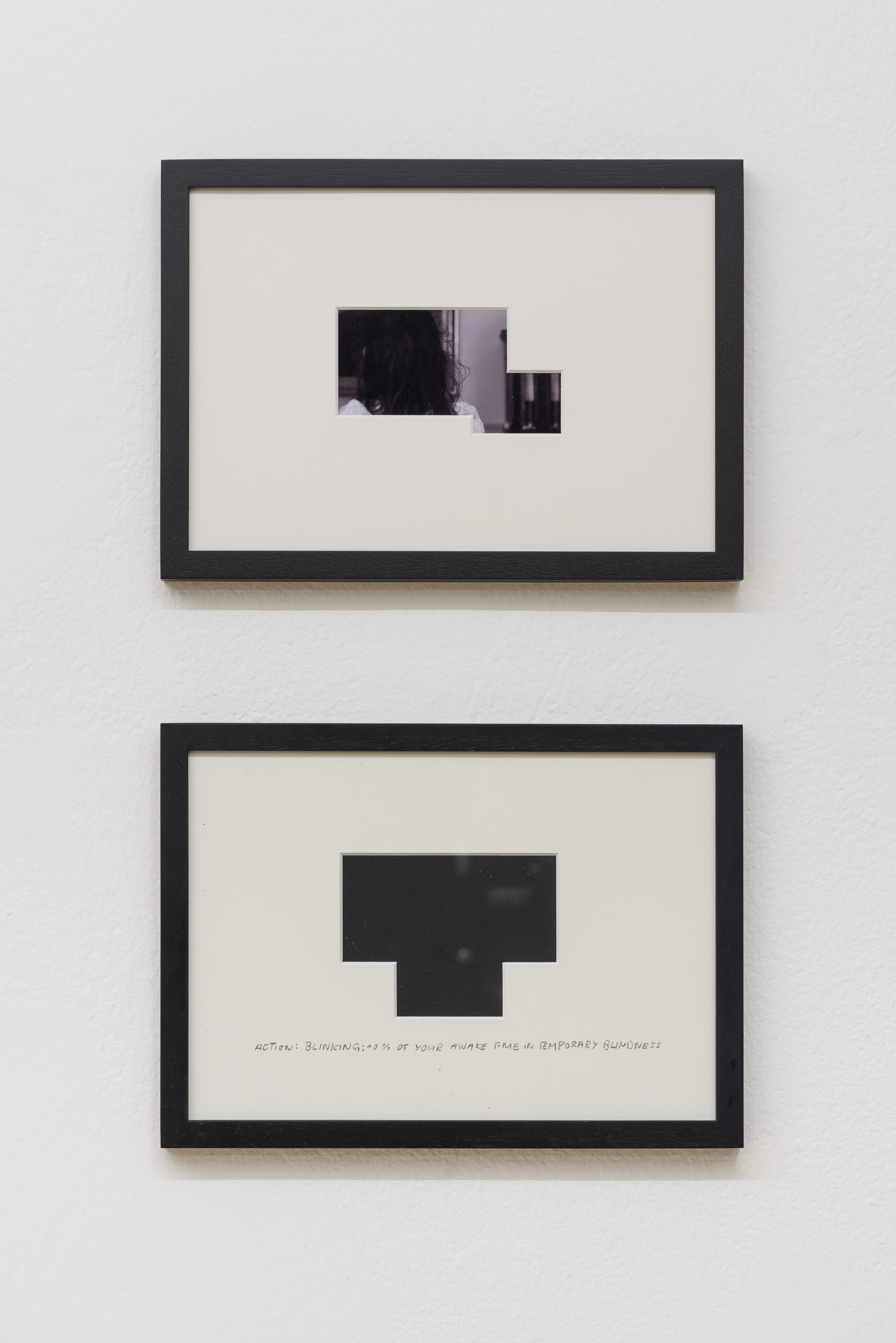
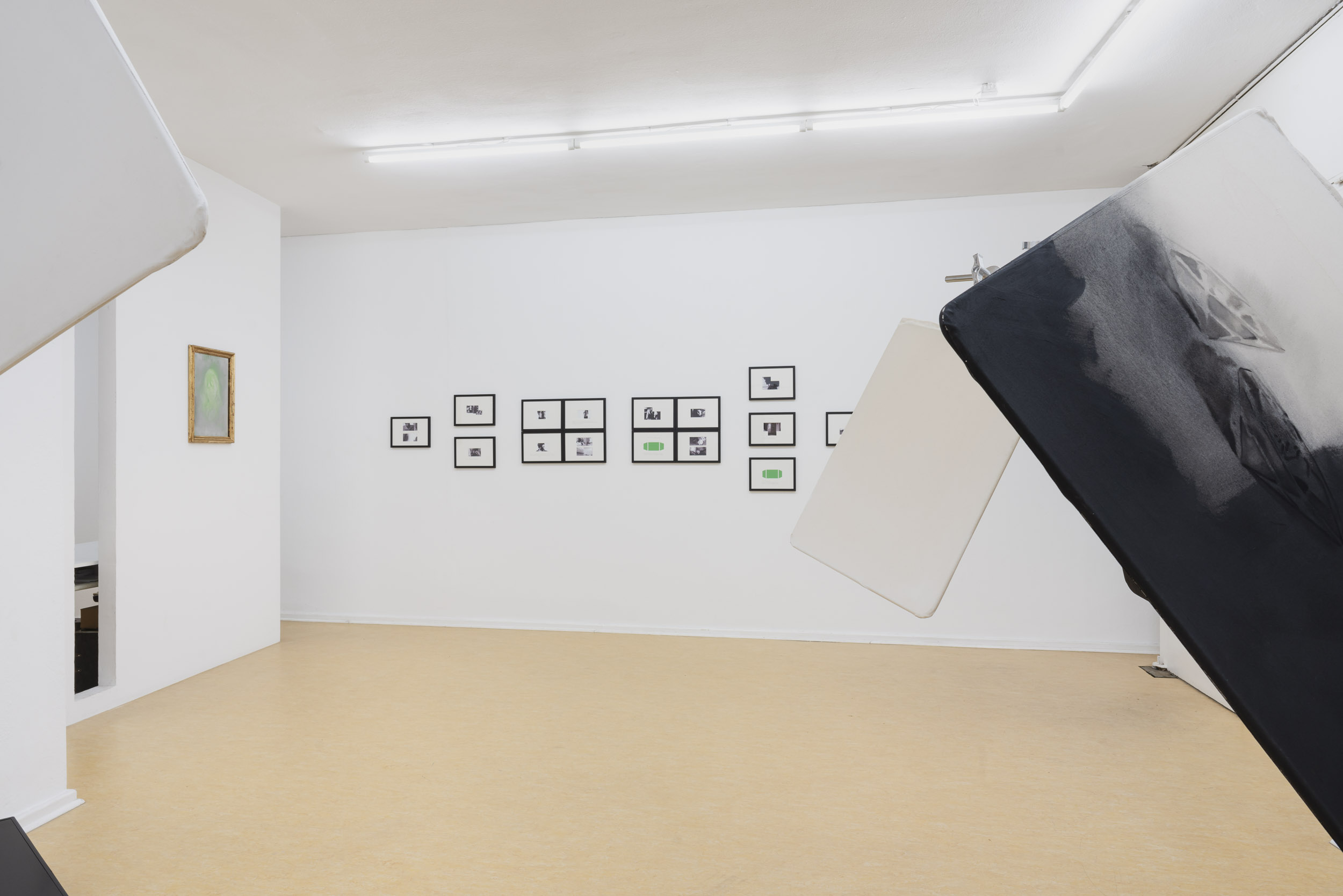
MacGuffin of a Daydream
Daniel Laufer
10. December 2023
—
27. January 2024
(d) Daniel Laufers fünfte Einzelausstellung bei KM mit dem Titel MacGuffin of a Daydream erschließt das filmische Erzählen auf einer räumlichen Ebene neu. Seit den frühen neunziger Jahren gilt der Westen am Ende seiner Geschichte angelangt. Der damit einhergehende Abschied vom historischen Denken zeitigt nicht nur eine Krise der großen weltgeschichtlichen Erzählungen, sondern stürzt auch die Narrative der künstlerischen Gattungen in eine prekäre Situation. Die Bretter, die einmal die Welt bedeuteten, sind glatt geworden. Die Reisen moderner Helden und Antihelden geraten ins Schlingern, ihre Odysseen haben sich verwandelt in diskursive Schleifen und imaginäre Kreisläufe des Immergleichen: Gegenwart als lückenloses continuity system, das nirgendwo anlangt. Blicke in den Spiegel und der Wunsch, es schaue jemand daraus zurück, der nicht man selbst ist wie in Moving Eyes, Objects Reproduced, A Silence Of Mirrors (2023) auf der Stirnwand gegenüber der Eingangstür.
Die Umbrüche, die der Kunst ihre geschichtliche Dimension zurückverleihen, findet Daniel Laufer in den Zwischenräumen, in den Auslassungen und den Entzweiungen der ästhetischen Form. In dem Audiofilm Blind Spots and Blink Moments sprechen Menschen wie Maschinen, Großaufnahmen aus der Dystopie der Gegenwart. Kinder, Eltern, Erzieher, Ärzte: Streng gerahmt und voll geheimer Sehnsucht, die Grenzen ihres eigenen Bildes zu überschreiten wie in The Inner Voice und Happy Ending of A Secret Story (2023). Die Totalen zeigen eine Straßenszene oder Warteräume im Krankenhaus, jene wenigen Orte, an denen fremde Menschen einander noch begegnen und Zeit miteinander verstreichen lassen wie in Surreal Symphony (2023). Was sie sich wünschen und worauf sie warten, das sind profane Wunder, die wir gelernt haben, in den Bereich des Unmöglichen zu verschieben. Auf den Skulpturen MacGufffin (I) und MacGuffin (II) scheinen dingliche Schätze der Kindheitserinnerung auf. Der MacGuffin dient als geheimnisvoller Katalysator der filmischen Erzählung im Zeitalter der ohnmächtigen Agency.
Eine Ahnung von Utopie, die auch dadurch entsteht, dass Laufers Film zugleich als Storyboard und Sequenz von Standbildern an der langen Wand im Raum existiert. Unser Realitätsprinzip erschöpft sich in bewusstloser Tätigkeit. Demgegenüber ist ein stillgestelltes Bild den Abläufen dieses Prinzips enthoben. Es ist der Ort, an dem endlich einmal nichts passieren muss, aber gerade deshalb alles andere passieren kann. Bei genauerer Betrachtung stellt sich heraus, das Standbild ist nicht eigentlich stillgestellt, sondern durchzittert von Reflexen der Hoffnung.
Der Mensch am Ende seiner Geschichte ähnelt einem blinden Huhn. Daniel Laufers Arbeit eröffnet ihm wieder Zugang zu den historischen Sedimenten in der Wüste, die wir Alltag nennen. Und siehe da: dort finden sich wider Erwarten ein Korn und Körnung obendrein. Wir erzählen einander Geschichten, um zu leben, hat Joan Didion einmal gesagt. Daniel Laufer erinnert daran, denn er erzählt vom Überleben der Geschichte.
Text: Daniel Moersener
(e) Daniel Laufer's fifth solo exhibition at KM, entitled MacGuffin of a Daydream, re-explores cinematic storytelling on a spatial level. Since the early nineties, the West has been considered to have reached the end of its history. The associated leave from historical thinking has not only led to a crisis in the great narratives of world history, but has also plunged the narratives of artistic genres into a precarious situation. The boards that once meant the world have become smooth. The journeys of modern heroes and anti-heroes are floundering, their odysseys have been transformed into discursive loops and imaginary cycles of repetition: The present as a seamless continuity system that never arrives anywhere. Glances into the mirror and the wish that someone is looking back at you who is not yourself, as in Moving Eyes, Objects Reproduced, A Silence Of Mirrors (2023) on the front wall opposite the entrance door.
Daniel Laufer finds the upheavals that lend art back its historical dimension in the spaces in between, in the omissions and the divisiveness of the aesthetic form. In the audio film Blind Spots and Blink Moments, people speak like machines, close-ups from the dystopia of the present. Children, parents, educators, doctors: strictly framed and full of a secret longing to transcend the boundaries of their own image, as in The Inner Voice and Happy Ending of A Secret Story (2023). The long shots show a street scene or hospital waiting rooms, those few places where strangers still meet and let time pass together, as in Surreal Symphony (2023). What they want and what they are waiting for are profane miracles that we have learnt to relegate to the realm of the impossible. In the sculptures MacGuffin (I) and MacGuffin (II), tangible treasures of childhood memories appear. The MacGuffin serves as a mysterious catalyser of the cinematic narrative in the age of impotent agency.
An inkling of utopia, which also arises from the fact that Laufer's film exists simultaneously as a storyboard and a sequence of still images on the long wall in the room. Our reality principle exhausts itself in unconscious activity. In contrast, a still image is removed from the processes of this principle. It is the place where finally nothing has to happen, but precisely for this reason everything else can happen. On closer inspection, it turns out that the still image is not actually still, but rather trembling with reflexes of hope.
The person at the end of his story resembles a blind chicken. Daniel Laufer's work gives him renewed access to the historical sediments in the desert that we call everyday life. And lo and behold: contrary to expectations, there is a grain and grit to boot. We tell each other stories in order to live, Joan Didion once said. Daniel Laufer reminds us of this as he tells of the survival of history.
Text: Daniel Moersener
Die Umbrüche, die der Kunst ihre geschichtliche Dimension zurückverleihen, findet Daniel Laufer in den Zwischenräumen, in den Auslassungen und den Entzweiungen der ästhetischen Form. In dem Audiofilm Blind Spots and Blink Moments sprechen Menschen wie Maschinen, Großaufnahmen aus der Dystopie der Gegenwart. Kinder, Eltern, Erzieher, Ärzte: Streng gerahmt und voll geheimer Sehnsucht, die Grenzen ihres eigenen Bildes zu überschreiten wie in The Inner Voice und Happy Ending of A Secret Story (2023). Die Totalen zeigen eine Straßenszene oder Warteräume im Krankenhaus, jene wenigen Orte, an denen fremde Menschen einander noch begegnen und Zeit miteinander verstreichen lassen wie in Surreal Symphony (2023). Was sie sich wünschen und worauf sie warten, das sind profane Wunder, die wir gelernt haben, in den Bereich des Unmöglichen zu verschieben. Auf den Skulpturen MacGufffin (I) und MacGuffin (II) scheinen dingliche Schätze der Kindheitserinnerung auf. Der MacGuffin dient als geheimnisvoller Katalysator der filmischen Erzählung im Zeitalter der ohnmächtigen Agency.
Eine Ahnung von Utopie, die auch dadurch entsteht, dass Laufers Film zugleich als Storyboard und Sequenz von Standbildern an der langen Wand im Raum existiert. Unser Realitätsprinzip erschöpft sich in bewusstloser Tätigkeit. Demgegenüber ist ein stillgestelltes Bild den Abläufen dieses Prinzips enthoben. Es ist der Ort, an dem endlich einmal nichts passieren muss, aber gerade deshalb alles andere passieren kann. Bei genauerer Betrachtung stellt sich heraus, das Standbild ist nicht eigentlich stillgestellt, sondern durchzittert von Reflexen der Hoffnung.
Der Mensch am Ende seiner Geschichte ähnelt einem blinden Huhn. Daniel Laufers Arbeit eröffnet ihm wieder Zugang zu den historischen Sedimenten in der Wüste, die wir Alltag nennen. Und siehe da: dort finden sich wider Erwarten ein Korn und Körnung obendrein. Wir erzählen einander Geschichten, um zu leben, hat Joan Didion einmal gesagt. Daniel Laufer erinnert daran, denn er erzählt vom Überleben der Geschichte.
Text: Daniel Moersener
(e) Daniel Laufer's fifth solo exhibition at KM, entitled MacGuffin of a Daydream, re-explores cinematic storytelling on a spatial level. Since the early nineties, the West has been considered to have reached the end of its history. The associated leave from historical thinking has not only led to a crisis in the great narratives of world history, but has also plunged the narratives of artistic genres into a precarious situation. The boards that once meant the world have become smooth. The journeys of modern heroes and anti-heroes are floundering, their odysseys have been transformed into discursive loops and imaginary cycles of repetition: The present as a seamless continuity system that never arrives anywhere. Glances into the mirror and the wish that someone is looking back at you who is not yourself, as in Moving Eyes, Objects Reproduced, A Silence Of Mirrors (2023) on the front wall opposite the entrance door.
Daniel Laufer finds the upheavals that lend art back its historical dimension in the spaces in between, in the omissions and the divisiveness of the aesthetic form. In the audio film Blind Spots and Blink Moments, people speak like machines, close-ups from the dystopia of the present. Children, parents, educators, doctors: strictly framed and full of a secret longing to transcend the boundaries of their own image, as in The Inner Voice and Happy Ending of A Secret Story (2023). The long shots show a street scene or hospital waiting rooms, those few places where strangers still meet and let time pass together, as in Surreal Symphony (2023). What they want and what they are waiting for are profane miracles that we have learnt to relegate to the realm of the impossible. In the sculptures MacGuffin (I) and MacGuffin (II), tangible treasures of childhood memories appear. The MacGuffin serves as a mysterious catalyser of the cinematic narrative in the age of impotent agency.
An inkling of utopia, which also arises from the fact that Laufer's film exists simultaneously as a storyboard and a sequence of still images on the long wall in the room. Our reality principle exhausts itself in unconscious activity. In contrast, a still image is removed from the processes of this principle. It is the place where finally nothing has to happen, but precisely for this reason everything else can happen. On closer inspection, it turns out that the still image is not actually still, but rather trembling with reflexes of hope.
The person at the end of his story resembles a blind chicken. Daniel Laufer's work gives him renewed access to the historical sediments in the desert that we call everyday life. And lo and behold: contrary to expectations, there is a grain and grit to boot. We tell each other stories in order to live, Joan Didion once said. Daniel Laufer reminds us of this as he tells of the survival of history.
Text: Daniel Moersener